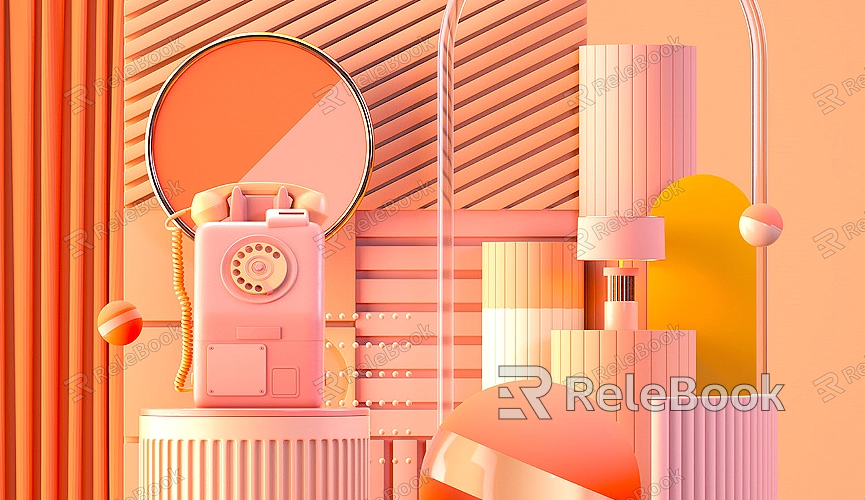How to Planet Texture in Element 3D
Element 3D is a powerful plugin for After Effects, widely used in video production, advertising, animation, and other creative industries. It allows users to efficiently work with 3D models and textures within After Effects. In this article, we'll guide you through the process of texturing in Element 3D, offering tips to help you enhance both your workflow and the final result.

1. Prepare Textures and Models
Before you start texturing, make sure you have the correct texture files and 3D models. If you're importing models from external software like Blender or 3ds Max, ensure the UV unwrapping has been properly done. A good UV map is crucial for proper texture placement.
Choosing Textures: Select the appropriate textures based on your project's requirements (e.g., wood, metal, stone). You can download these from texture libraries or create them yourself using image editing software like Photoshop.
Model Preparation: Ensure that the UV unwrap of your model is clean. When importing the model into After Effects, it should have enough surface information for the texture to map correctly.
2. Load Your Model into Element 3D
Open After Effects and import the 3D model you want to use. Ensure the Element 3D plugin is installed and active. In the Element 3D interface, you'll need to set up the model, adjusting its coordinates, rotation, and scale as needed.
Importing the Model: Create a new composition in After Effects, select the Element 3D plugin, right-click to choose "Custom Layers," and load your 3D model file.
Adjust Parameters: Use the Element 3D plugin's interface to modify the basic properties of the model, such as scale, position, and rotation, ensuring that they display correctly in your scene.
3. Apply Textures to the Model
Once the model is loaded, it's time to add textures. In Element 3D, the process involves applying maps to the material slots.
Select Material Slot: In the "Scene Setup" window of Element 3D, you'll see a list of materials. Select the material to which you want to apply the texture and click on the material box to enter edit mode.
Load Textures: In the material editing interface, select the "Diffuse" channel, and click the icon next to it to load your texture image. Make sure that the texture's resolution and size are suitable for your model.
Adjust Texture Mapping: Element 3D automatically applies the texture to the model's surface. However, you may need to adjust the mapping method. Use the “Texture Mapping” options to choose from different mapping types like Planar Mapping or Spherical Mapping.
4. Adjust Texture Tiling and Proportions
You may need to fine-tune how the texture tiles to ensure it appears correctly on the 3D model’s surface. Scaling, rotating, and translating the texture can help it fit better.
Texture Tiling: In Element 3D, you can use the “Texture Offset” option to adjust the tiling of your texture. By adjusting the values on the X and Y axes, you can scale the texture up or down to ensure its details align properly with the surface of the model.
Rotation and Alignment: If the texture appears incorrectly aligned on the model, use the rotation tool to adjust its direction. This helps ensure that the texture's orientation matches the surface of the model.

5. Add Details and Material Effects
To increase the realism of the texture, you can add additional details and material effects such as gloss, reflections, and normal maps. These effects can enhance the depth and complexity of the texture.
Gloss and Reflection: Adjust the "Specular" property of the material to control the shine and reflective properties of the texture. This is especially useful for simulating materials like metal or smooth water surfaces.
Normal Maps: Adding a normal map can give the surface texture more detail and depth. This is important for simulating realistic materials, such as the cracks in stone or the grain in wood.
6. Render and Optimize
After applying the textures, the next step is rendering. You’ll need to optimize the Element 3D render settings to ensure that textures appear in the best quality in the final render.
Lighting Setup: In Element 3D, lighting plays a crucial role in how textures are displayed. Adjust the position, intensity, and shadow settings of your light sources to enhance the texture details on the model.
Render Settings: Modify the rendering settings to ensure that the texture details are sharp in the final output. Element 3D supports high-quality reflections and shadow rendering, so adjusting these settings can improve the overall texture effect.
7. Post-Processing
Once rendering is complete, you can use other After Effects tools for post-processing. Adjusting contrast, saturation, and color temperature can further refine the texture’s appearance, making it better suited to your project’s needs.
Texturing in Element 3D is a meticulous process, involving several steps like texture selection, model adjustments, and fine-tuning. By using Element 3D’s tools effectively, you can bring your 3D models to life with rich, realistic textures. Fine-tuning the mapping, scaling, and detailing of textures will significantly enhance the overall look of your model.
If you're looking for high-quality 3D texture resources, SketchUp models, or 3ds Max models to create models and virtual environments, Relebook offers a wide selection that can help you achieve outstanding visual effects for your projects.

